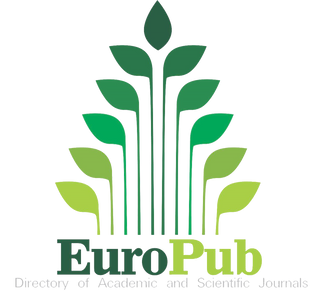Korištenje dijatomeja u biološkoj procjeni kvalitete vode na primjeru male krške rijeke u Bosni i Hercegovini
DOI:
https://doi.org/10.54652/rsf.2019.v49.i1.25Ključne riječi:
diatoms, diatom indices, water quality, Bosnia and Herzegovina, OMNIDIASažetak
UDK: 574.5(282.249 Bunica)
Istraživanje bentoskih dijatomeja u rijeci Bunici provedeno je u razdoblju od 5. svibnja 2013. do 9. siječnja 2014. na tri različite postaje, od izvora do ušća. Rijeka Bunica je krška tekućica kratkog toka (oko 6 km), ulijeva se u rijeku Bunu, a nalazi se u jugoistočnom dijelu mostarske doline, na jugu Bosne i Hercegovine. Cilj ovog istraživanja bio je testirati korištenje bentoskih dijatomeja u svrhu praćenja kvalitete vode budući da se dijatomeje redovito koriste kao bioindikatori za ocjenu kvalitete površinskih voda. Uz bentoske dijatomeje testirano je i korištenje dijatomnih indeksa kao alata za procjenu kvalitete vode. Ukupno 17 indeksa je izračunato korištenjem softvera OMNIDIA GB 5.3. Korišteni indeksi su pokazali različite rezultate kao i varijacije između istraživanih postaja. Prema vrijednostima indeksa kvaliteta vode u rijeci je u lošijoj kategoriji (II, III, IV razred) u odnosu na kvalitetu vode prema fizikalno kemijskim čimbenicima (I razred). Prema tome indeksi u programu OMNIDIA nisu primjenjivi za krške rijeke u Bosni i Hercegovini i trebali bi se modificirati u tu svrhu. Važno bi bilo provesti detaljnija istraživanja koja bi uključivala veći broj sličnih postaja kako bi se utvrdilo koji indeks je najprimjenjiviji postajama te kako bi se napravila modifikacija indeksa koji bi odgovarao specifičnim krškim i bosanskohercegovačkim uvjetima.
Downloads
References
BATTARBEE R.W., FLOWER, R.J., JUGGINS, S., PATRICK, S.T. & STEVENSON, A.C. (1997): The relationship between diatoms and surface water quality in the Høylandet area of Nord-Trøndelag, Norway. Hydrobiologia, 348(1-3), 69-80.
BELTRAMI, M. E., CIUTTI, F., CAPPELLETTI, C., LÖSCH, B., ALBER, R. & ECTOR, L. (2012): Diatoms from Alto Adige/Südtirol (Northern Italy): characterization of assemblages and their application for biological quality assessment in the context of the Water Framework Directive. Hydrobiologia, 695(1), 153-170.
BESSE-LOTOTSKAYA, A., VERDONSCHOT, P. F., COSTE, M. & VAN DE VIJVER, B. (2011): Evaluation of European diatom trophic indices. Ecological Indicators, 11(2), 456-467.
CEMAGREF, C. (1982): Etude des méthodes biologiques quantitative d’appréciation de la qualité des eaux. Rapport Division Qualité des Eaux Lyon – Agence financiére de Bassin Rhone – Méditerranée – Corse, Pierre –Bénite, pp 218.
CORING E. (1993): Zum Indikationswert bentischer Diatomeengesellschaften in basenarmen Fließgewassern. Verlag Shaker, Aachen.
CORING E. (1999): Situation and developments of algal (diatom)-based techniques for monitoring rivers in Germany. In: Use of Algae for Monitoring Rivers III (Eds J. Prygiel, B.A. Whitton & J. Bukowska), Agence de l’Eau Artois-Picardie, Douai. pp. 122–127.
COSTE, M. & AYPHASSORHO, H. (1991): Etude de la qualité des eaux du bassin Artois Picardie à ľaide des communautés de diatomées benthiques [Application des indices diatomiques]. Rapport Cemagref Bordeaux – Agence de ľEau Artois Picardie, 277.
CSANYI, B., MAKOVINSKA, J., PAUNOVIĆ, M., IGNJATOVIĆ, J., BALAZI P., OSWALD, P., SLOBODNIK, J. (2008): Mid-term report: Preparation of the Study of the Biological Monitoring of the Rivers and Lakes/ Reservoirs in B&H. pp 209.
DELL’UOMO, A. (1996): Assessment of water quality of an Apennine river as a pilot study for diatom-based monitoring of Italian watercourses. Use of algae for monitoring rivers II. Institut für Botanik, Universität Innsbruck, Innsbruck, 65- 72. 12.
DELL'UOMO, A., M. TORRISI (2011): The Eutrophication/Pollution Index-Diatom based (EPI-D) and three new related indices for monitoring rivers: The case study of the river Potenza (the Marches, Italy), Plant Biosystems – A International Journal Dealing with all Aspects of Plant Biology: Official Journal of the Societa Botanica Italiana, 145:2. 331-341 13.
DENYS L. (1991A): A check-list of the diatoms in the holocene deposits of the Western Belgian coastal plain with a survey of their apparent ecological requirements. I. Introduction, ecological code and complete list. Ministe `re des Affaires Economiques – Service Ge ´ologique de Belgique.
DESCY, J. P. & COSTE, M. (1991): A test of methods for assessing water quality based on diatoms. Internationale Vereinigung für theoretische und angewandte Limnologie: Verhandlungen, 24(4), 2112-2116.
DESCY, J. P. & MICHA, J. C. (1988): Use of biological indices of water quality. Statistical Journal of the United Nations Economic Commission for Europe, 5(3), 249-261.
EC (2000): Directive 2000/60/EC of the European Parliament and of the Council. Official Journal of the European Communities 1–73
EN 13946 (2003): Water quality – Guidance standard for the routine sampling and pretreatment of benthic diatoms from rivers: 1–18.
HERING, D., C. K. FELD, O. MOOG. & T. OFENBO C.K. (2006): Cook book for the development of a Multimetric-Index for biological condition of aquatic ecosystems: experiences from the European AQEM and STAR projects and related initiatives. Hydrobiologia 566: 311–324.
HOFMANN, G. (1994): Aufwuchs-Diatomeen in Seen und ihre Eignung als Indikatoren der Trophie. Bibl. Diatomol., 30: 241.
KALYONCU, H., & SERBETCI, B. (2013): Applicability of diatom-based water quality assessment indices in Dari stream, Isparta-Turkey. In Proceedings of World Academy of Science, Engineering and Technology (No. 78, p. 1873). World Academy of Science, Engineering and Technology (WASET).
KELLY, M. G., ADAMS, C., GRAVES, A. C. (2001): The Trophic Diatom Index: A User's Manual; Revised Edition. Environment Agency. 435.
KELLY, M. G., CAZAUBON, A., CORING, E., DELL'UOMO, A., ECTOR, L., GOLDSMITH, B. & KWANDRANS, J. (1998): Recommendations for the routine sampling of diatoms for water quality assessments in Europe. Journal of applied Phycology, 10 (2), 215.
KELLY, M. G., PENNY, C. J., WHITTON, B. A. (1995): Comparative performance of benthic diatom indices used to assess river water quality. Hydrobiologia 302. 179-188. 36.
KELLY, M. G., WHITTON, B. A. (1995): The Trophic Diatom Index: a new index for monitoring eutrophication in rivers. Journal of Applied Phycology 7, 433–444.
KITNER, M. & POULÍCKOVÁ, A. (2003): Littoral diatoms as indicators for the eutrophication of shallow lakes. Hydrobiologia, 506(1-3), 519-524.
KRAMMER, K. (2000–2003): Diatoms of Europe. The Genus Pinnularia, 1. – 703 pp.; Cymbella, 3.-584 pp.; Cymbopleura, Delicata, Navicymbula, Gomphocymbellopsis, Afrocymbella, 4. 530 pp. – In: Lange-Bertalot, H. (ed.).- A.R.G. Gantner Verlag K.G.
KRAMMER, K. & LANGE–BERTALOT, H. (2004): Bacillariophyceae, Achnanthaceae, 2/4. – In: ettl, H., gärtner, g., Heynig, H. & mollen HAU er, D. (eds): Sűβwasserflora von Mitteleuropa. – 468 pp., G. Fischer, Stuttgart, New York.
KRAMMER, K., LANGE-BERTALOT, H. (1986): Bacillariophyceae, 1. Teil: Naviculaceae. U : Ettl, H., Gerloff, J., Heynig, H., Mollenhauer, D. (Eds): Süsswasserflora von Mitteleuropa 2/1. – G.Fischer-Verlag, Stuttgart, 876 pp. 44.
KRAMMER, K., LANGE-BERTALOT, H. (1988): Bacillariophyceae, 2. Teil: Bacillariaceae, Epithemiaceae, Surirellaceae. U: Ettl, H., Gerloff, J., Heynig, H., Mollenhauer, D. (Eds): Süsswasserflora von Mitteleuropa 2/2. – G. FischerVerlag, Stuttgart. 45.
KRAMMER, K., LANGE-BERTALOT, H. (1991a): Bacillariophyceae, 3. Teil: Centrales, Fragilariaceae, Eunotiaceae. – In: Ettl, H., Gerloff, J., Heynig, H., Mollenhauer, D. (Eds), Süsswasserflora von Mitteleuropa 2/3. – G. Fischer-Verlag, Stuttgart. 46.
KRAMMER, K., LANGE-BERTALOT, H., (1991): Bacillariophyceae 4. Teil: Achnanthaceae, Kritische Ergänzungen zu Navicula (Lineolatae) und Gomphonema. Gesamtliteraturverzeichnis Teil 1–4. In: Ettl, H., Gärtner, G., Gerloff, J., Heynig, H., Mollenhauer, D. (eds.), Süsswasserfl ora von Mitteleuropa. Band 2/4. Gustav Fischer Verlag, Stuttgart.
KRAMMER, K., LANGE-BERTALOT, H. (1997a): Bacillariophyceae 1. Teil: Naviculaceae. In: Ettl, H., Gerloff, J., Heynig, H., Mollenhauer, D. (eds.), Süsswasserfl ora von Mitteleuropa. Band 2/1. Gustav Fischer Verlag, Jena.
KRAMMER, K., LANGE-BERTALOT, H. (1997b): Bacillariophyceae 2. Teil: Bacillariaceae, Epithemiaceae, Surirellaceae. In: Ettl, H., Gerloff, J., Heynig, H., Mollenhauer, D. (eds.), Süsswasserfl ora von Mitteleuropa. Band 2/2. Gustav Fischer Verlag, Jena.
LANGE-BERTALOT, H. (2001): Navicula sensu stricto, 10 genera separated from Navicula sensu lato, Frustulia. In: Lange-Bertalot, H. (ed.), Diatoms of Europe, 2. A. R. G. Gantner Verlag K. G., Ruggell, Liechtenstein.
LANGE-BERTALOT, H. & METZELTIN D. (1996): Indicators of Oligotrophy. – In Lange–Bertalot, H. (ed.): Iconographia Diatomologica, 2. -390.
LAVOIE, I., CAMPEAU, S., GRENIER, M. & DILLON, P. J. (2006): A diatom-based index for the biological assessment of eastern Canadian rivers: an application of correspondence analysis (CA). Canadian Journal of Fisheries and Aquatic Sciences, 63(8), 1793-1811.
LECLERCQ, L. & MAQUET, B. (1987): Deux nouveaux indices chimique et diatomique de qualité d'eau courante: application au Samson et à ses affluents (Bassin de la Meuse belge): Comparaison avec d'autres indices chimiques, biocénotiques et diatomiques. Institut Royal des Sciences Naturelles de Belgique.
LECOINTE, C., COSTE M. & PRYGIEL, J. “Omnidia”: software for taxonomy, calculation of diatom indices and inventories management." Hydrobiologia 269.1 (1993): 509-513.
LENOIR, A. & COSTE, M. (1996): Development of pratical diatomic index of overall water quality applicable to the French National Water Board Network. In: Use of algae for monitoring rivers. II. Edited by B.A. Whitton and E. Rott. Institut für Botanik, Universität Innsbruck. p. 29–43.
LEVKOV, Z. (2009): Amphora sensu lato. U: Lange-Bertalot, H.: Diatoms of Europe. Volume 5. A.R.G. Gantner Verlag K.G.
LOBO, E.A., BES, D., TUDESQUE, L., & ECTOR, L. (2004): Water quality assessment of the Pardinho River, RS, Brazil, using epilithic diatom assemblages and faecal coliforms as biological indicators. Vie et Milieu, 54(2-3), 115-126.
MILANOVIĆ, P.T. (2006): Karst of Eastern Herzegovina and Dubrovnik littoral. ZUHRA, pp 362, Beograd.
PORTER, S. D., MUELLER, D. K., SPAHR, N. E., MUNN, M. D., & DUBROVSKY, N. M. (2008). Efficacy of algal metrics for assessing nutrient and organic enrichment in flowing waters. Freshwater Biology, 53(5), 1036-1054.
POTAPOVA, M. & CHARLES, D.F. (2007): Diatom metrics for monitoring eutrophication in rivers of the United States. Ecological indicators, 7(1), 48-70.
POULÍČKOVÁ, A., DUCHOSLAV, M., & DOKULIL, M. (2004): Littoral diatom assemblages as bioindicators of lake trophic status: A case study from perialpine lakes in Austria. European Journal of Phycology, 39(2), 143-152.
PRYGIEL, J. (2002): Management of the diatom monitoring networks in France. Journal of Applied Phycology, 14(1), 19-26.
PRYGIEL, J., COSTE, M., & BUKOWSKA, J. (1996): Les diatomées et les indices diatomiques dans les réseaux de mesure de la qualité des cours d'eau français: Historique et Avenir. Bulletin Français de la Pêche et de la Pisciculture, (341-342), 65-79.
RIMET, F., GOMÀ, J., CAMBRA, J., BERTUZZI, E., CANTONATI, M., CAPPELLETTI, C., & TISON, J. (2007): Benthic diatoms in western European streams with altitudes above 800 M: characterisation of the main assemblages and correspondence with ecoregions. Diatom research, 22(1), 147-188.
ROTT, E., HOFMANN, G., PALL, K., PFISTER, P. & PIPP E. (1997): Indikationslisten für Aufwuchsalgen. Teil 1: Saprobielle Indikation. Bundesministerium für Land-und Forstwirtschaft, Wien. 73.
ROTT, E., PFISTER, P., VAN DAM, H., PIPP, E., PALL, K., BINDER, N. & ORTLER, K. (1999): Indikationslisten fur Aufwuchsalgen. Teil 2: Trophieindikation sowie geochemische Pra ¨ferenz, taxonomische und toxikologische Anmerkungen. Bundesministerium für Land-und Forstwirtschaft, Wien, 248.
ROTT, E., PIPP, E. & PFISTER, P. (2003): Diatom methods developed for river quality assessment in Austria and a cross-check against numerical trophic indication methods used in Europe. Algological Studies, 110(1), 91-115.
SCHIEFELE, S., SCHREINER, C. (1991): Use of diatoms for monitoring nutrient enrichment, acidification and impact of salt in rivers in Germany and Austria. Use of algae for monitoring rivers, 103-110.
SLÁDEČEK, V. (1986): Diatoms as indicators of organic pollution. Acta hydrochimica et hydrobiologica, 14(5), 555-566. 74.
SLUŽBENE NOVINE FEDERACIJE BOSNE I HERCEGOVINE (Official Gazete FBH) (2013): Zakon o vodama: Odluka o karakterizaciji površinskih i podzemnih voda, referentnim uvjetima i parametrima za ocjenu stanja voda i monitoringu voda. Sarajevo: Službene novine Federacije BH, broj 70/06, 10-44 75.
SOININEN, J. & NIEMELÄ, P. (2002): Inferring the phosphorus levels of rivers from benthic diatoms using weighted averaging. Archiv für Hydrobiologie, 154(1), 1-18.
STENGER-KOVÁCS, C., BUCZKO, K., HAJNAL, E. & PADISÁK, J. (2007): Epiphytic, littoral diatoms as bioindicators of shallow lake trophic status: Trophic Diatom Index for Lakes (TDIL) developed in Hungary. Hydrobiologia, 589(1), 141-154.
SZCZEPOCKA, E. & SZULC, B. (2009): The use of benthic diatoms in estimating water quality of variously polluted rivers. Oceanological and Hydrobiological Studies, 38(1), 17-26.
VAN DAM H. (1997): Partial recovery of moorland pools from acidification: indications by chemistry and diatoms. Netherlands Journal of Aquatic Ecology, 30, 203-218.
VAN DAM, H., MERTENS, A. & SINKELDAM, J. (1994): A coded checklist and ecological indicator values of freshwater diatoms from the Netherlands. Netherlands Journal of Aquatic Ecology, 28, 117–133.
WATANABE, T., ASAI, K., HOUKI A. (1986): Numerical estimation to organic pollution of flowing water by using epilithic Diatom assemblage Index (DAIpo).-The Science of the Total Environment 55:209-218.
WU, J. T. (1999): A generic index of diatom assemblages as bioindicator of pollution in the Keelung River of Taiwan. Hydrobiologia, 397, 79-87.
ZIEMANN, H. (1999): Bestimmung des Halobienindex. In: Biologische Gewässeruntersuchung (Eds W. Tümpling & G. Friedrich), Methoden der Biologischen Gewässeruntersuchung, 2, 310-313.






















